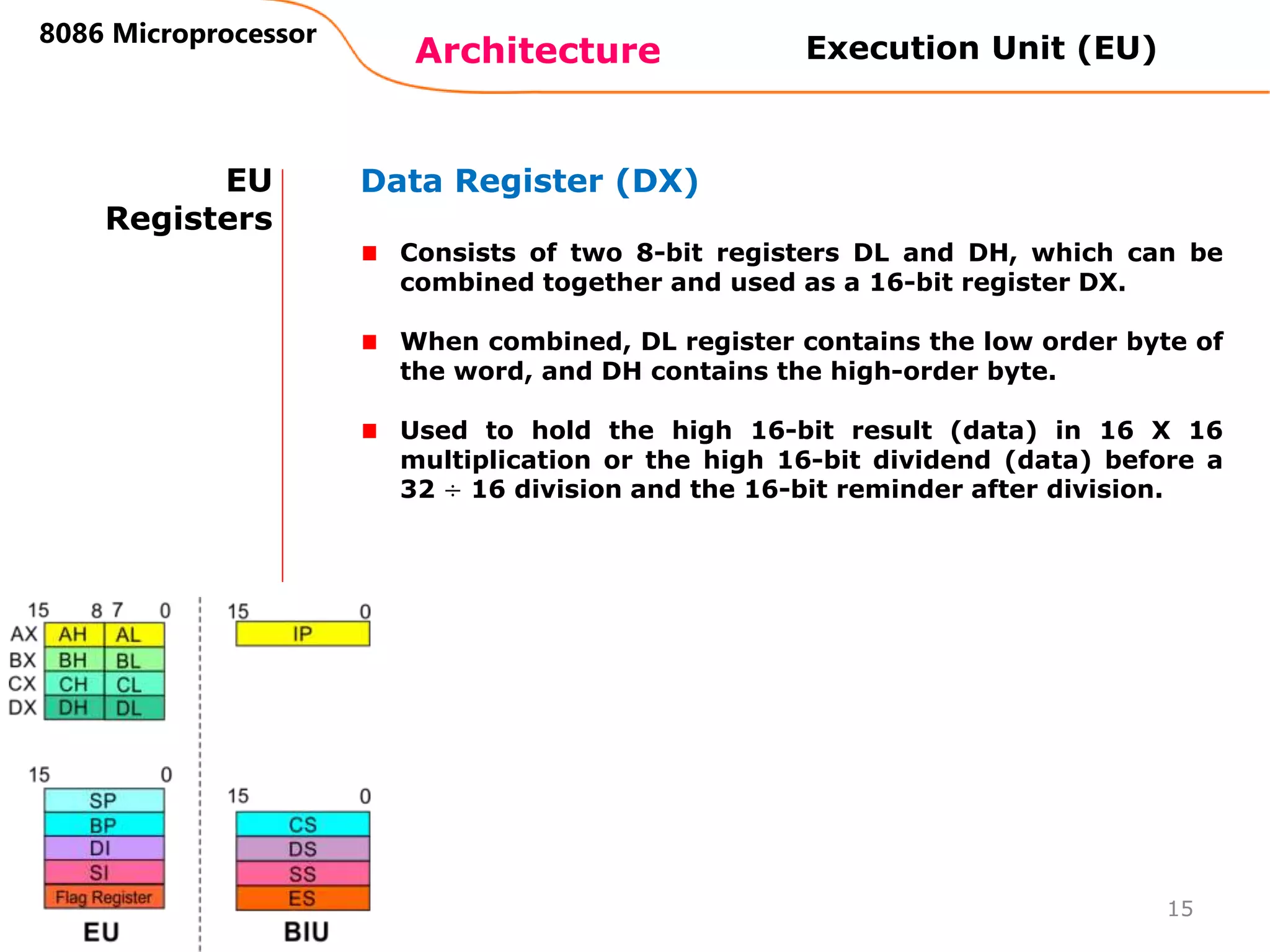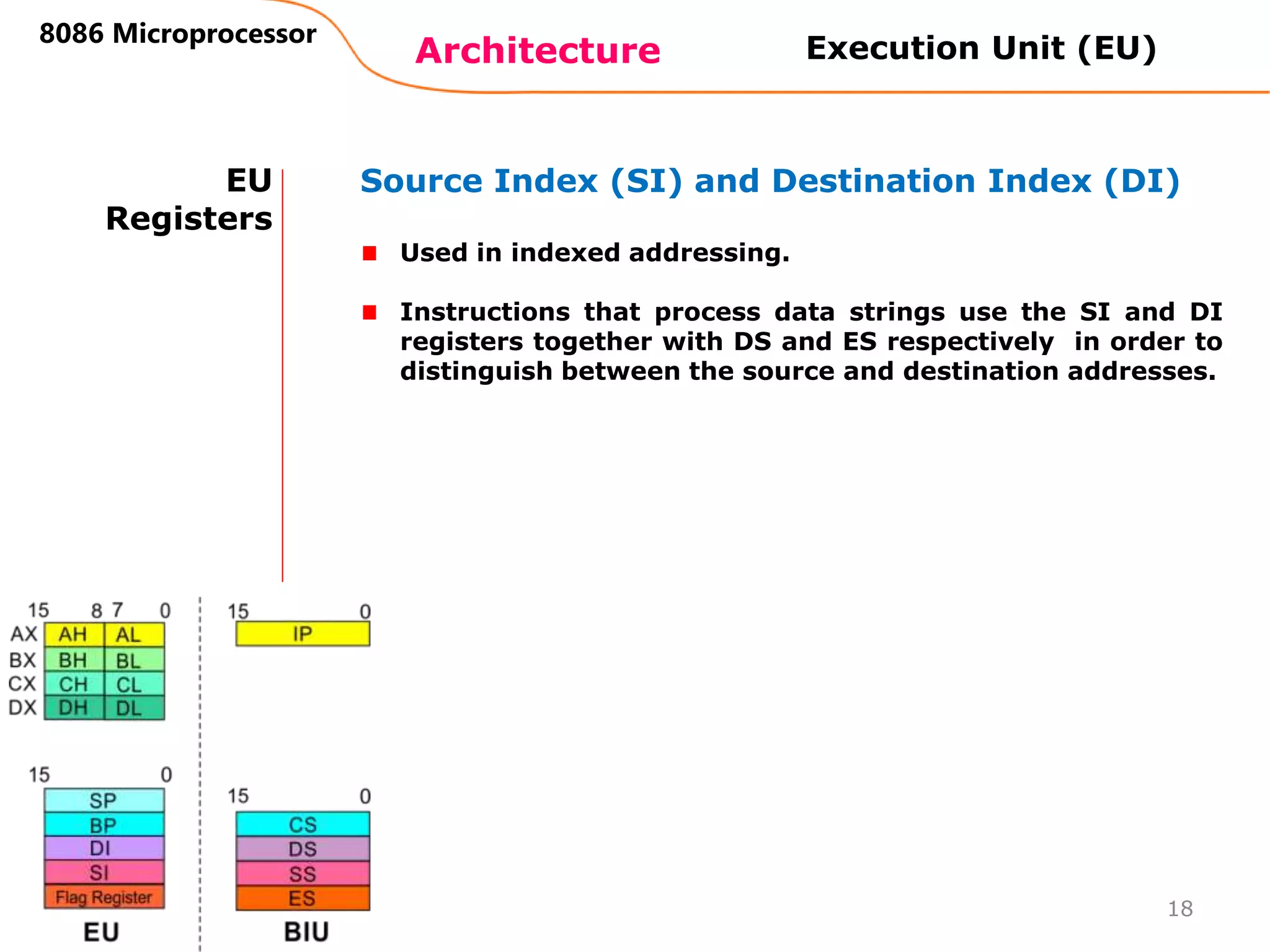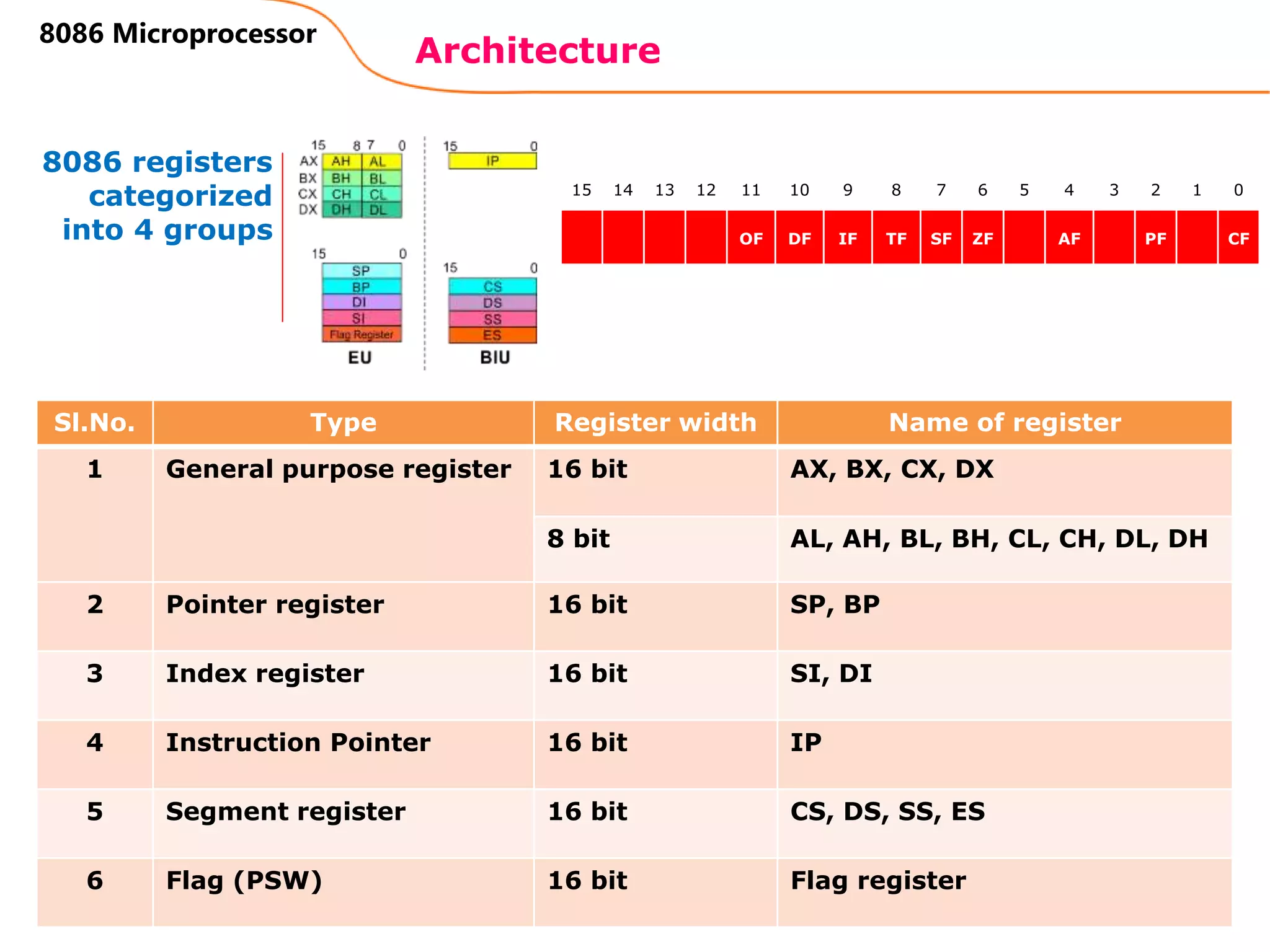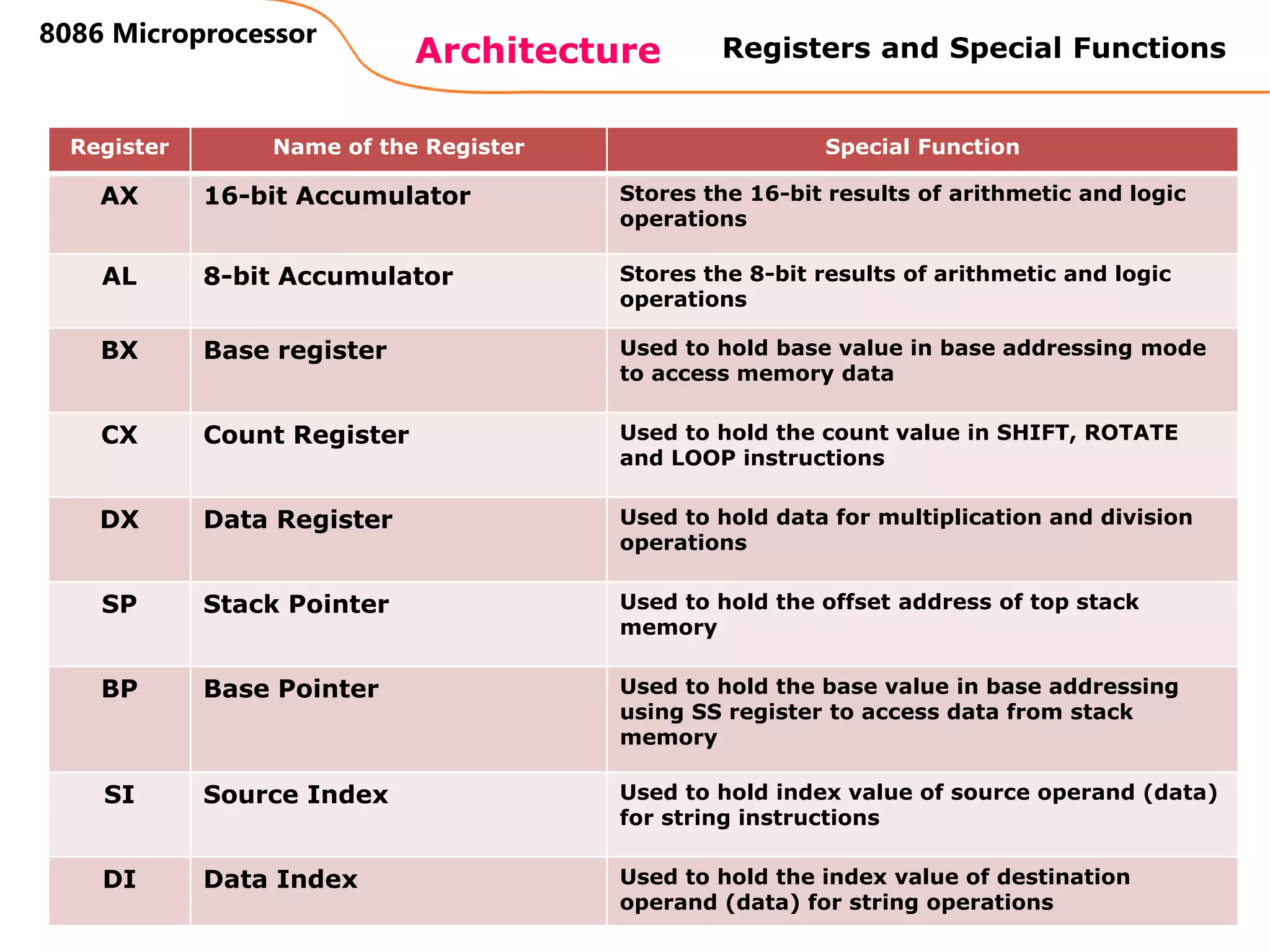The document discusses the architecture of the 8086 microprocessor. It describes the various functional blocks including the computational unit, internal storage, instruction decoding unit, and timing and control unit. It also explains the bus interface unit and execution unit that fetch and execute instructions, respectively. Finally, it provides details about the different registers used by the 8086 like the segment registers, flag register, and general purpose registers.


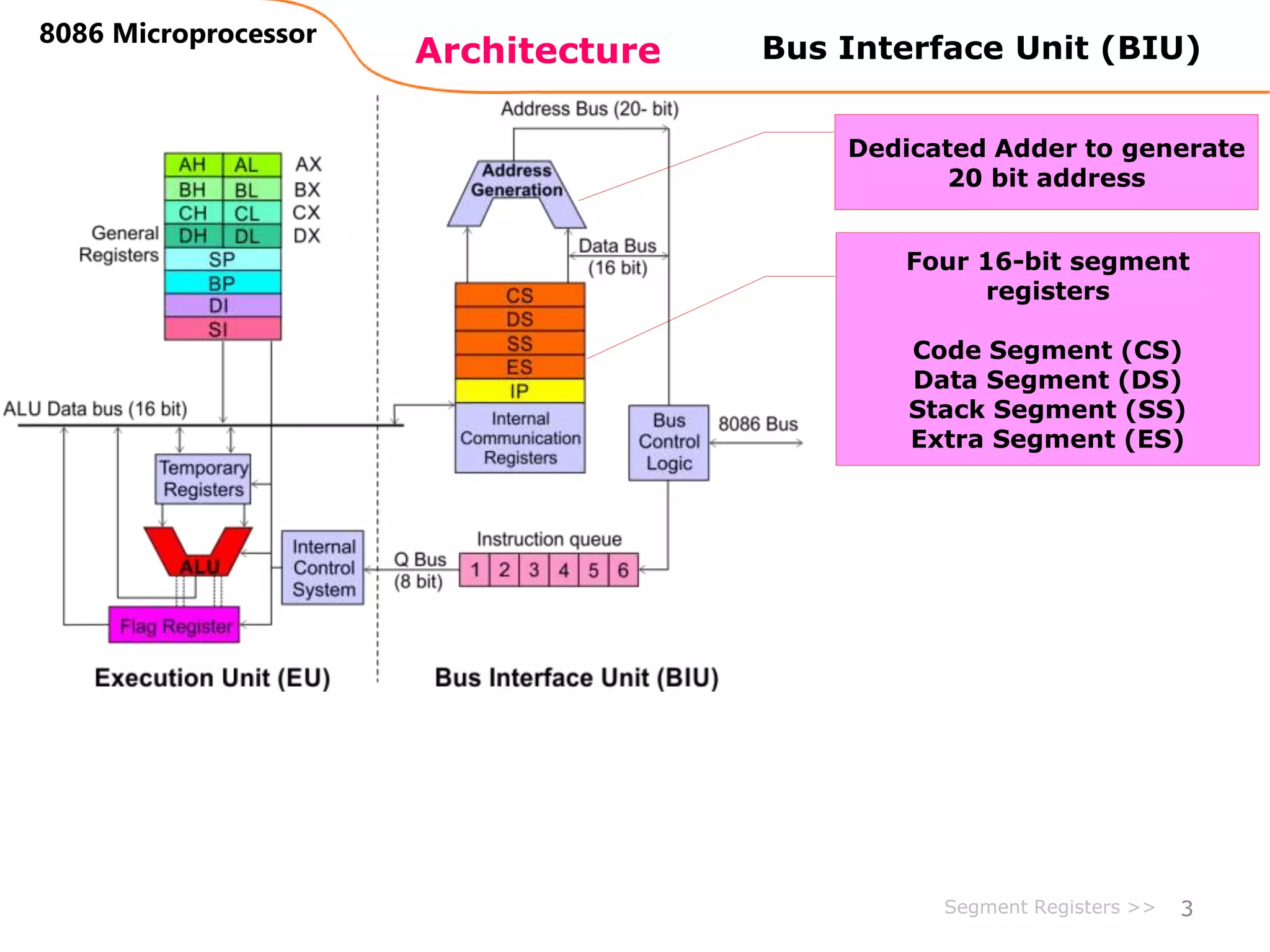

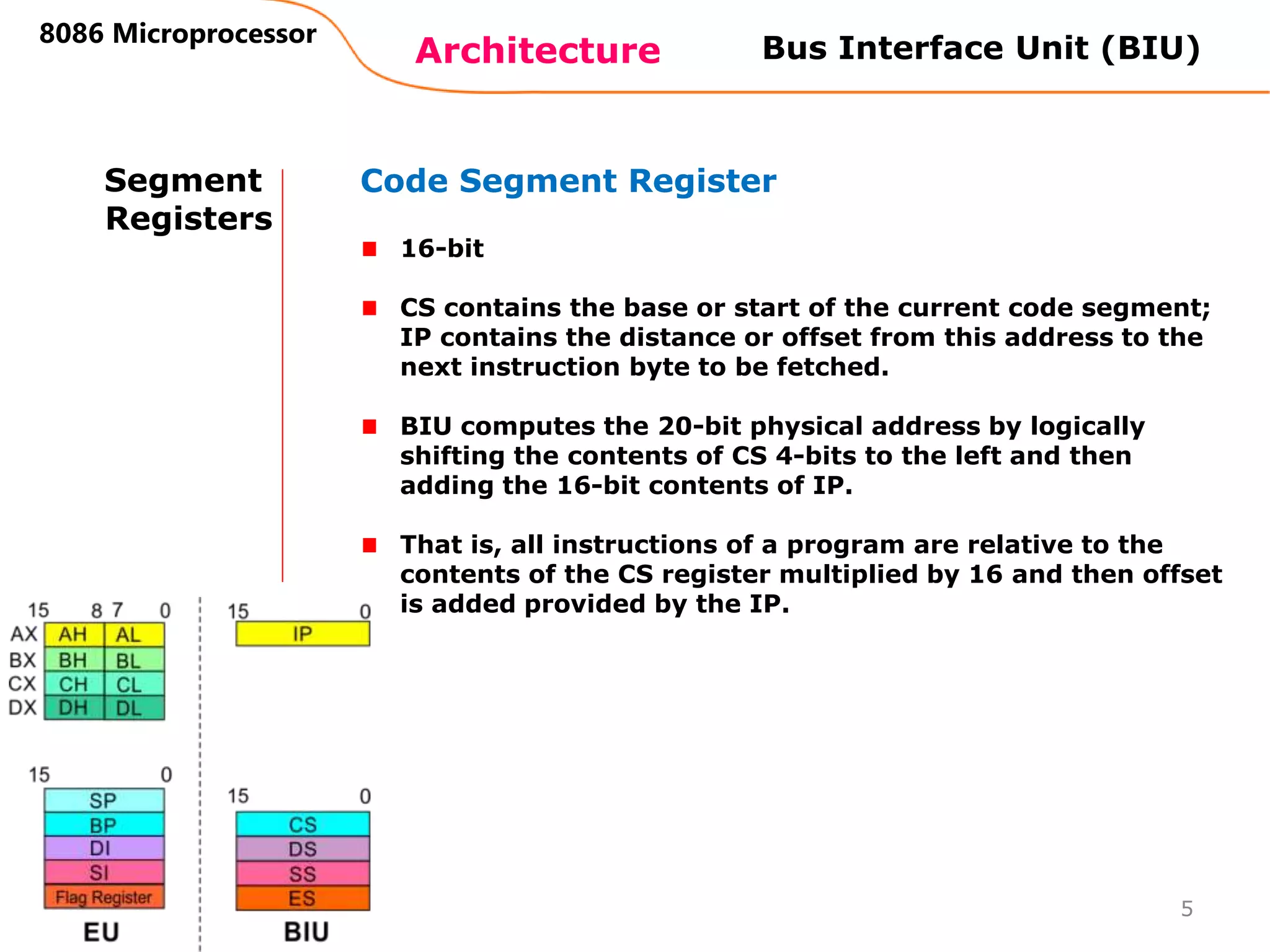

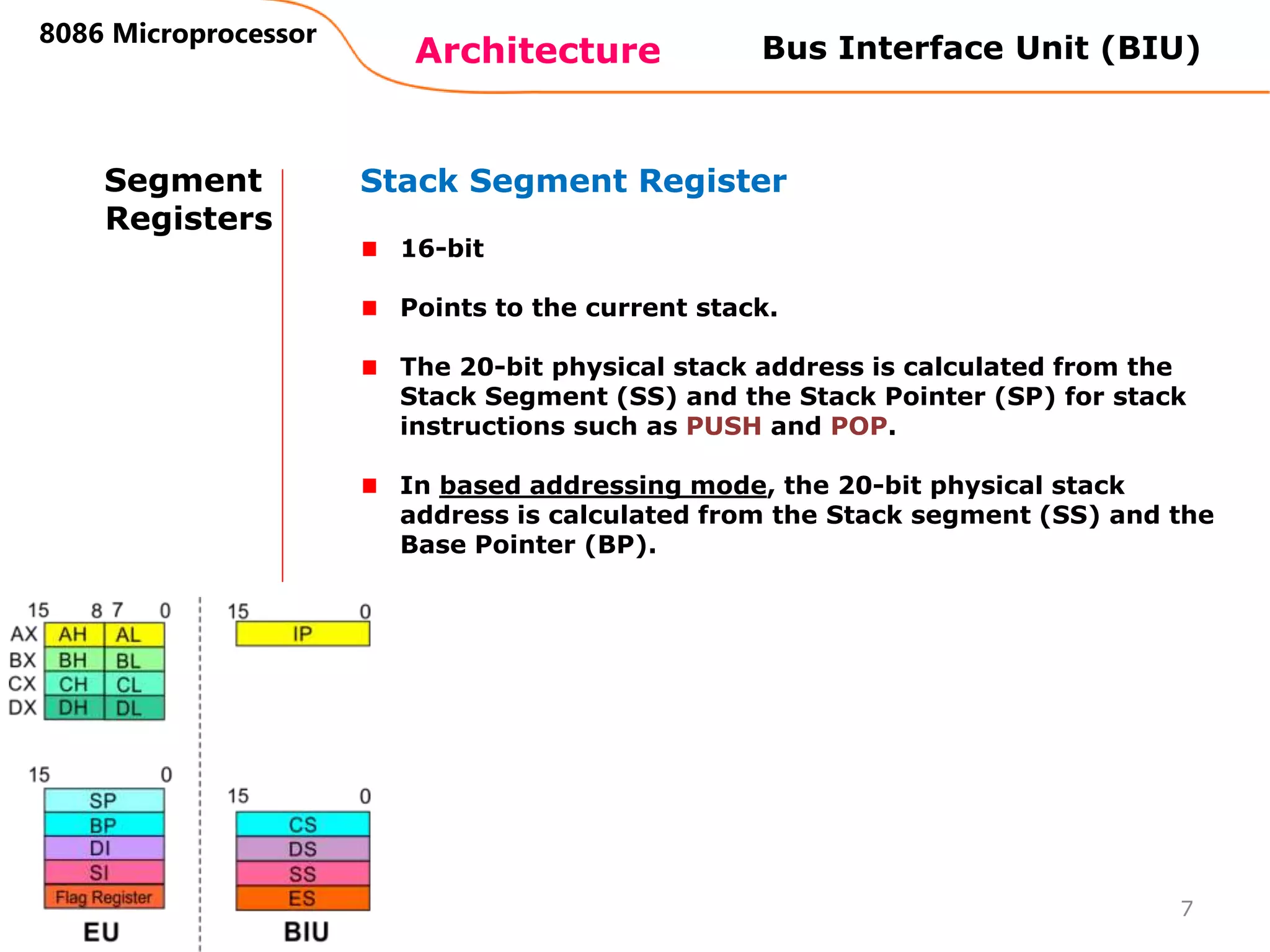
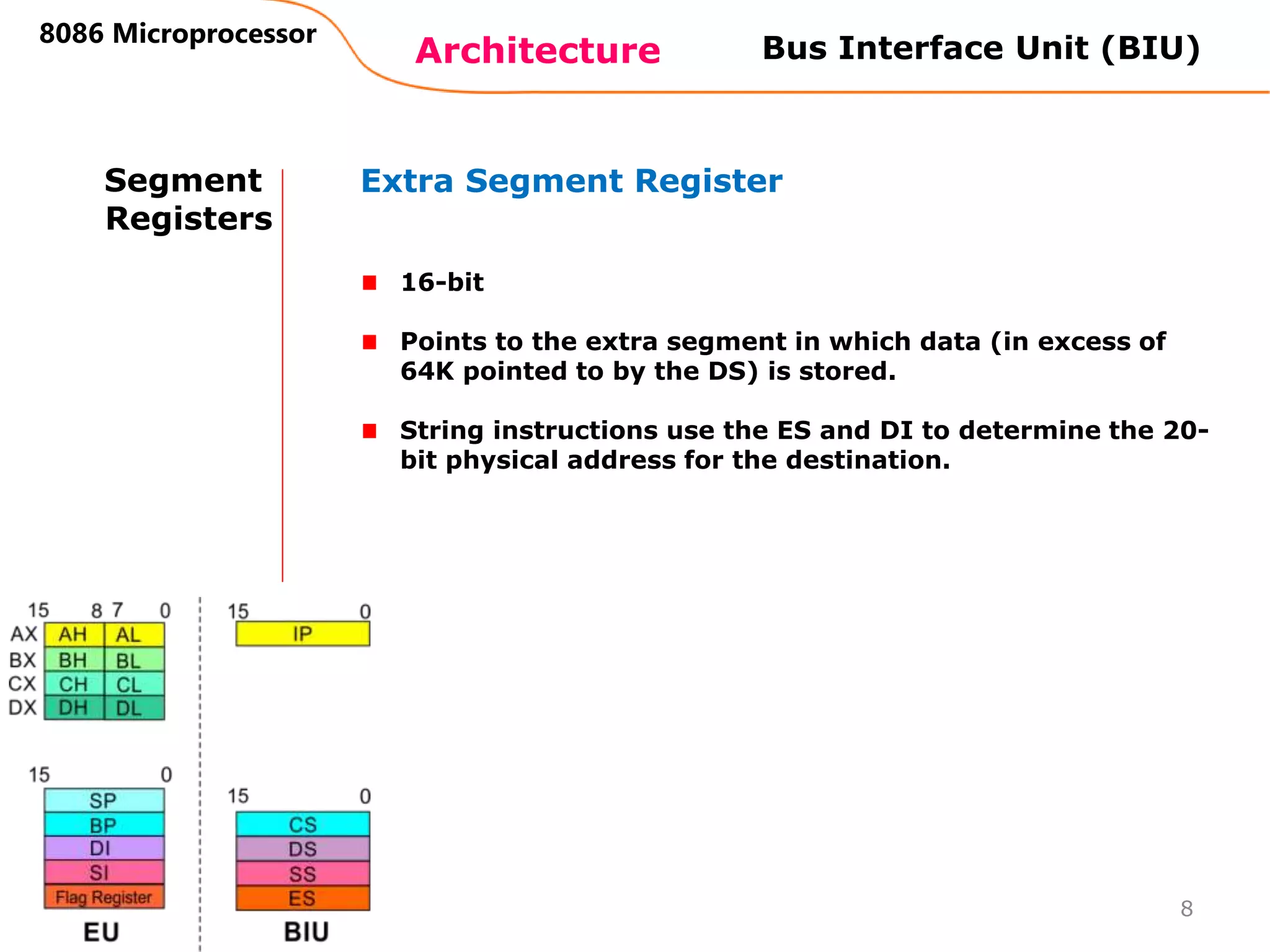

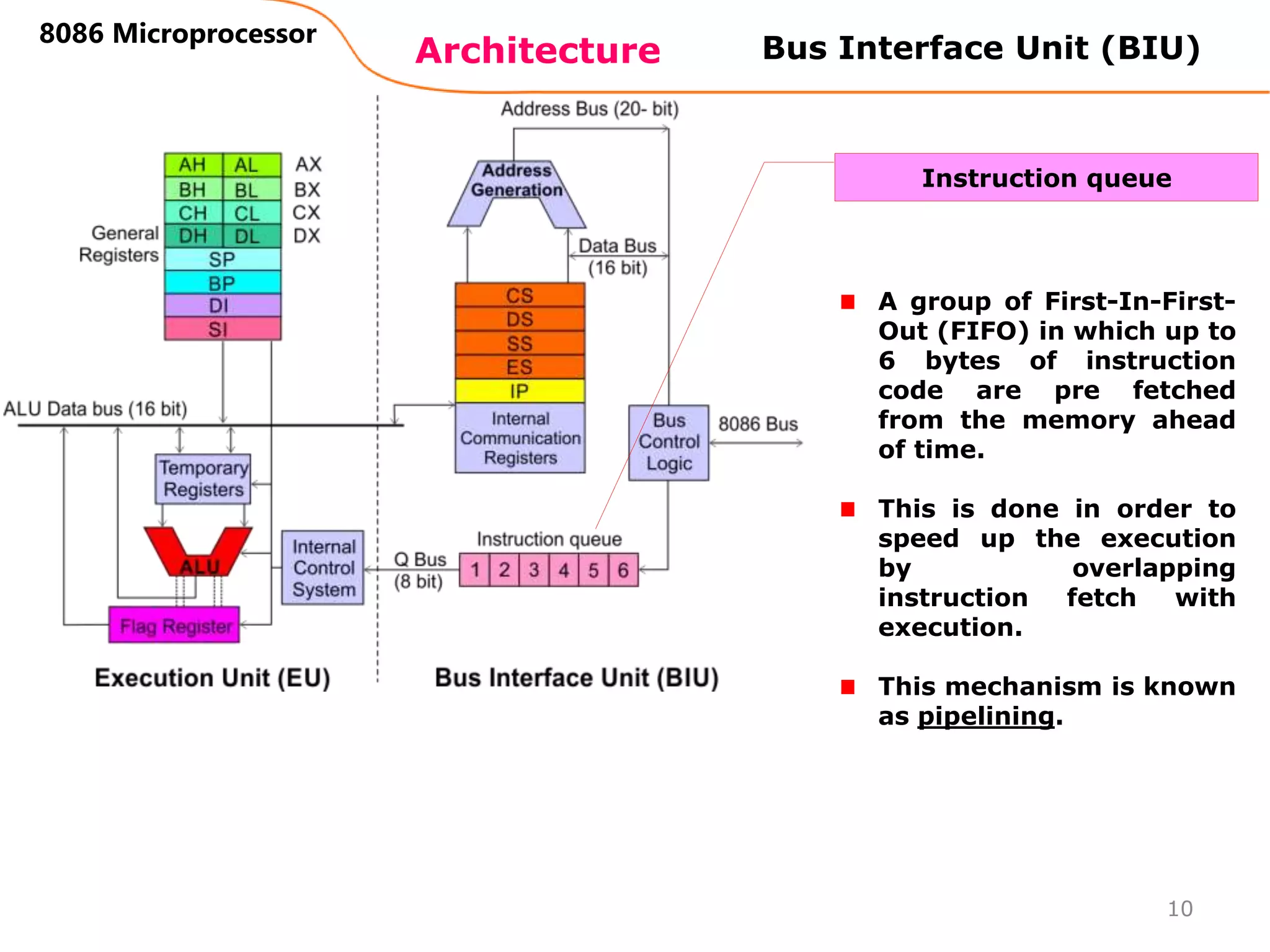
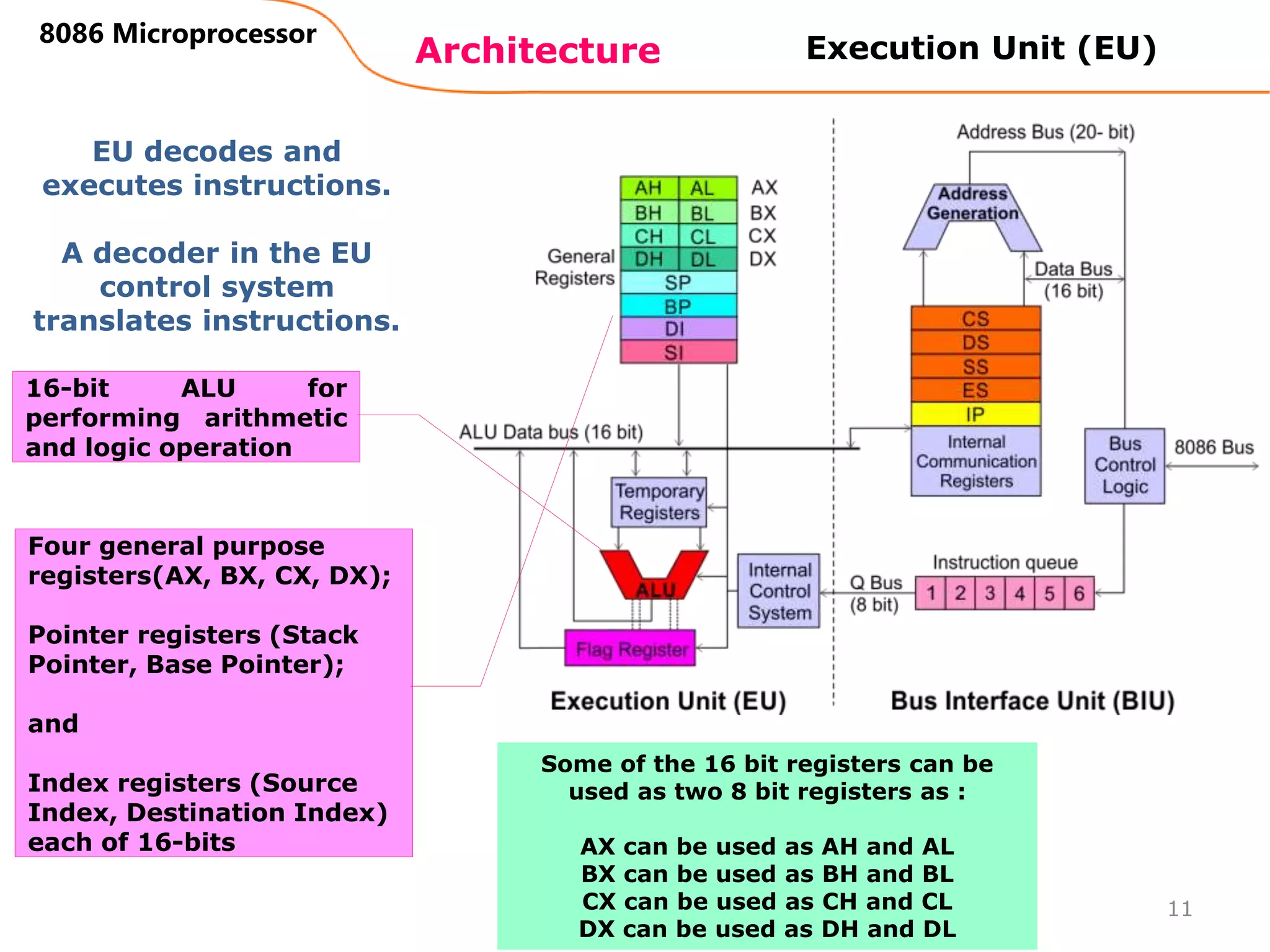
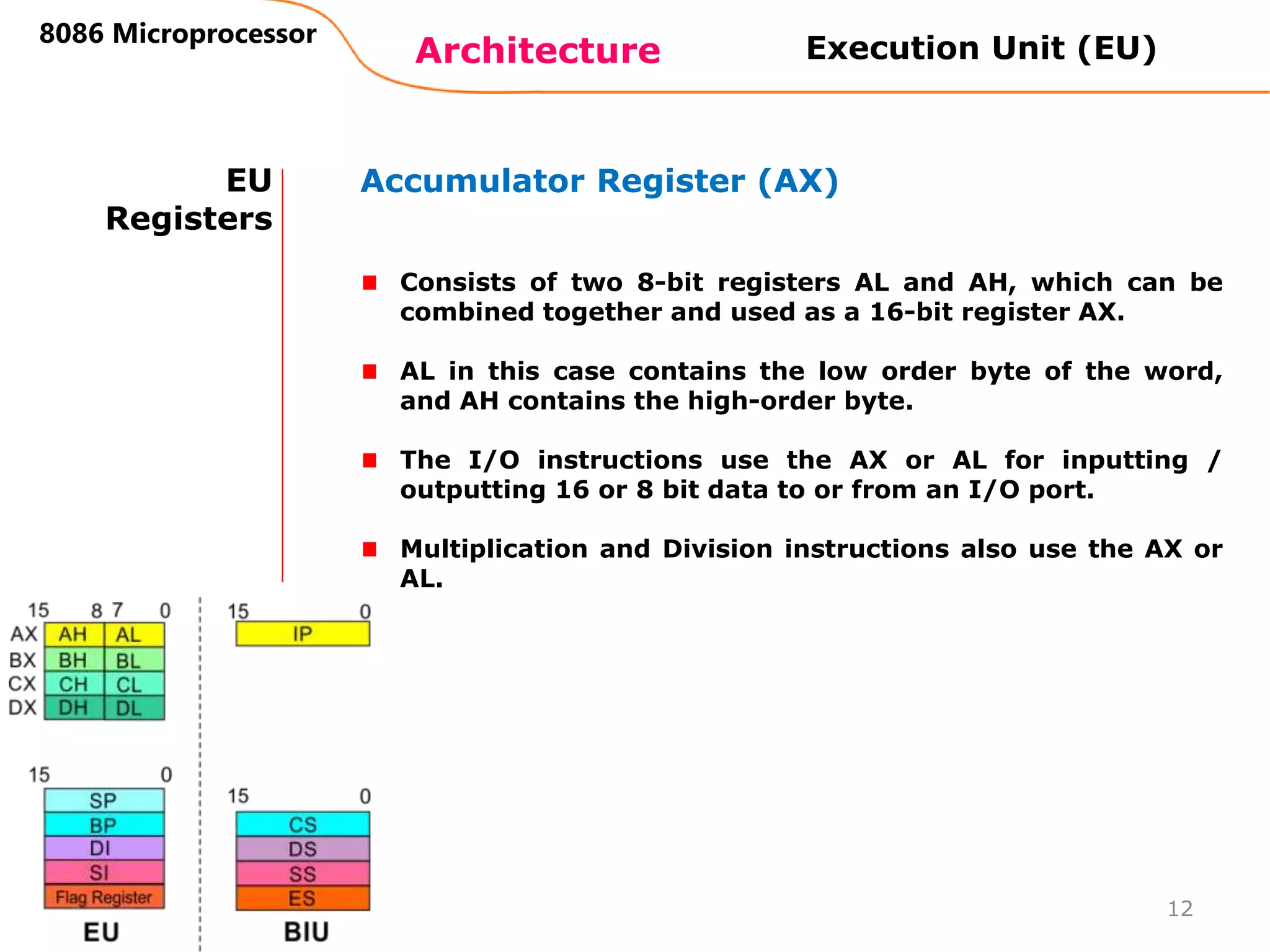
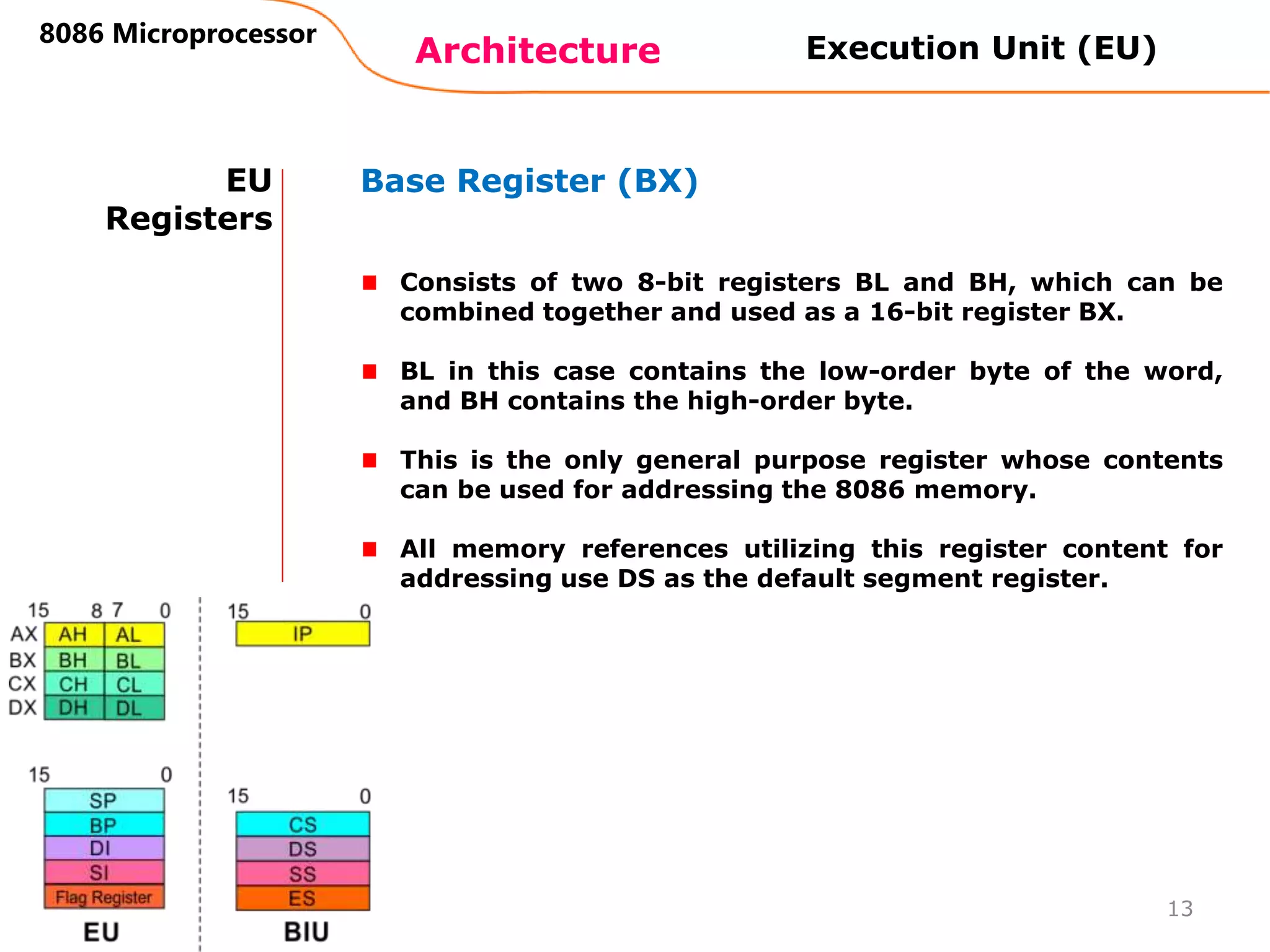
![Architecture
8086 Microprocessor
14
EU
Registers
Counter Register (CX)
Consists of two 8-bit registers CL and CH, which can be
combined together and used as a 16-bit register CX.
When combined, CL register contains the low order byte of
the word, and CH contains the high-order byte.
Instructions such as SHIFT, ROTATE and LOOP use the
contents of CX as a counter.
Execution Unit (EU)
Example:
The instruction LOOP START automatically decrements
CX by 1 without affecting flags and will check if [CX] =
0.
If it is zero, 8086 executes the next instruction;
otherwise the 8086 branches to the label START.](https://image.slidesharecdn.com/architecture-221111112836-312b1c58/75/Microprocessor-Architecture-pptx-14-2048.jpg)
